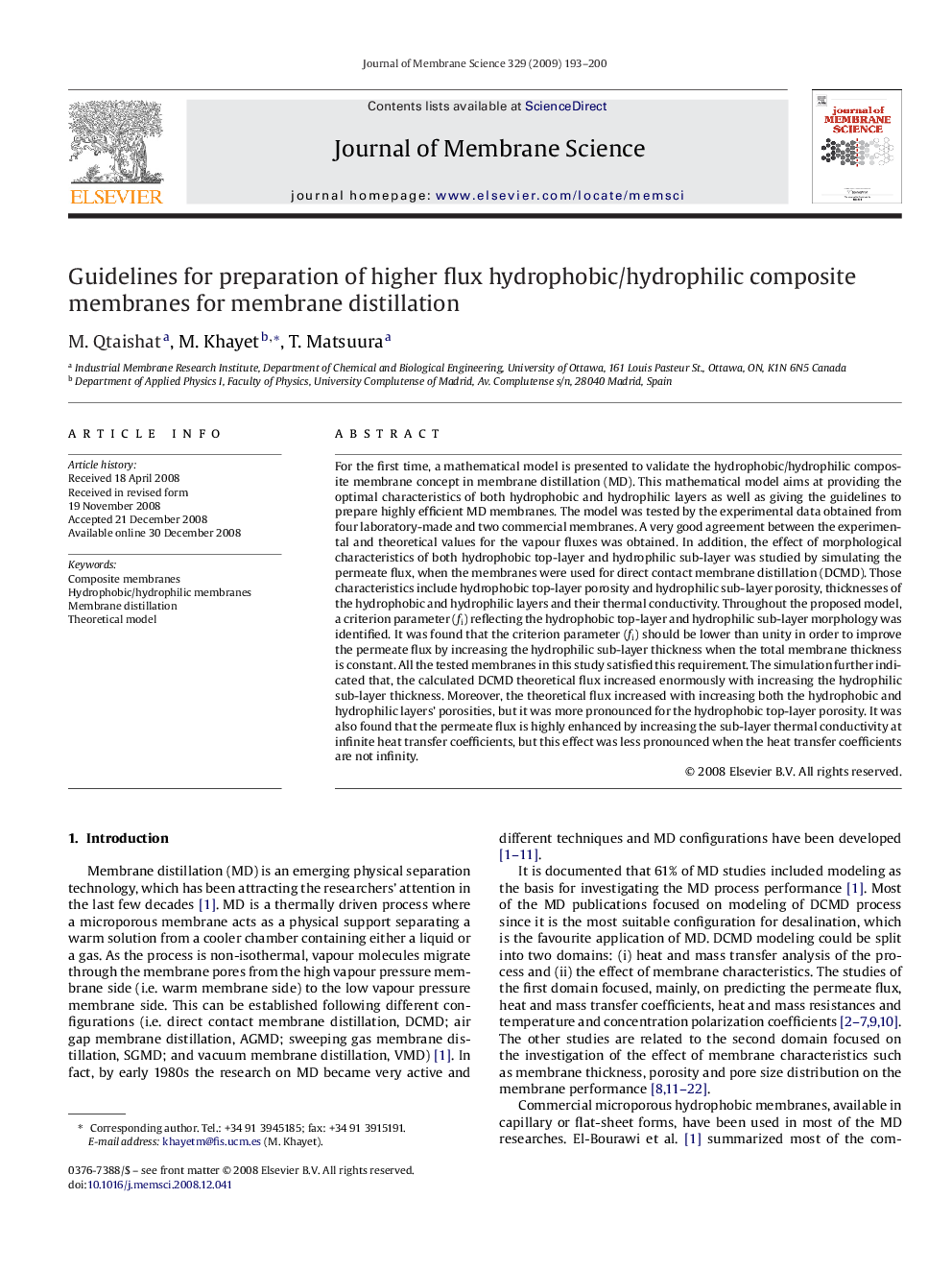| Article ID | Journal | Published Year | Pages | File Type |
|---|---|---|---|---|
| 637369 | Journal of Membrane Science | 2009 | 8 Pages |
For the first time, a mathematical model is presented to validate the hydrophobic/hydrophilic composite membrane concept in membrane distillation (MD). This mathematical model aims at providing the optimal characteristics of both hydrophobic and hydrophilic layers as well as giving the guidelines to prepare highly efficient MD membranes. The model was tested by the experimental data obtained from four laboratory-made and two commercial membranes. A very good agreement between the experimental and theoretical values for the vapour fluxes was obtained. In addition, the effect of morphological characteristics of both hydrophobic top-layer and hydrophilic sub-layer was studied by simulating the permeate flux, when the membranes were used for direct contact membrane distillation (DCMD). Those characteristics include hydrophobic top-layer porosity and hydrophilic sub-layer porosity, thicknesses of the hydrophobic and hydrophilic layers and their thermal conductivity. Throughout the proposed model, a criterion parameter (fi) reflecting the hydrophobic top-layer and hydrophilic sub-layer morphology was identified. It was found that the criterion parameter (fi) should be lower than unity in order to improve the permeate flux by increasing the hydrophilic sub-layer thickness when the total membrane thickness is constant. All the tested membranes in this study satisfied this requirement. The simulation further indicated that, the calculated DCMD theoretical flux increased enormously with increasing the hydrophilic sub-layer thickness. Moreover, the theoretical flux increased with increasing both the hydrophobic and hydrophilic layers’ porosities, but it was more pronounced for the hydrophobic top-layer porosity. It was also found that the permeate flux is highly enhanced by increasing the sub-layer thermal conductivity at infinite heat transfer coefficients, but this effect was less pronounced when the heat transfer coefficients are not infinity.
